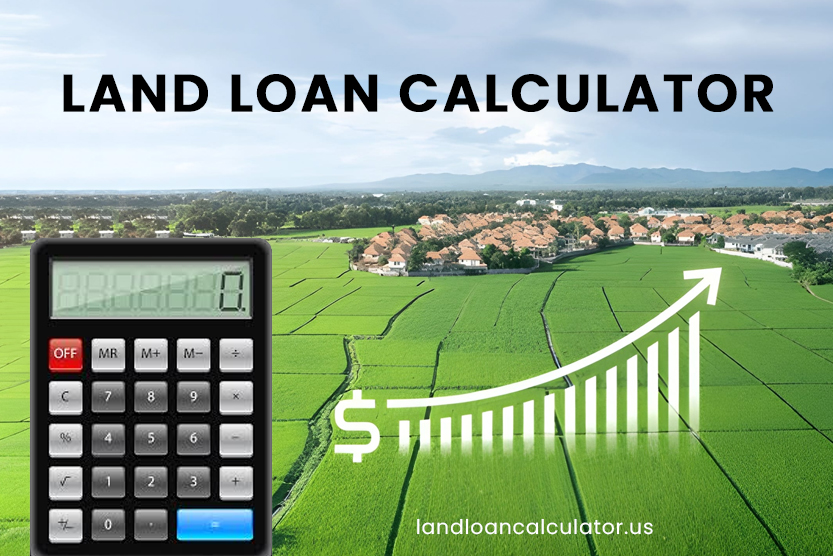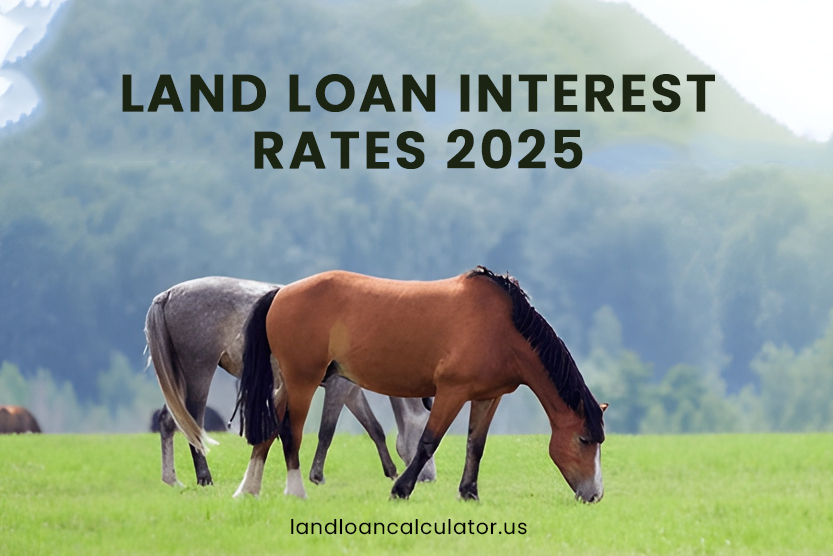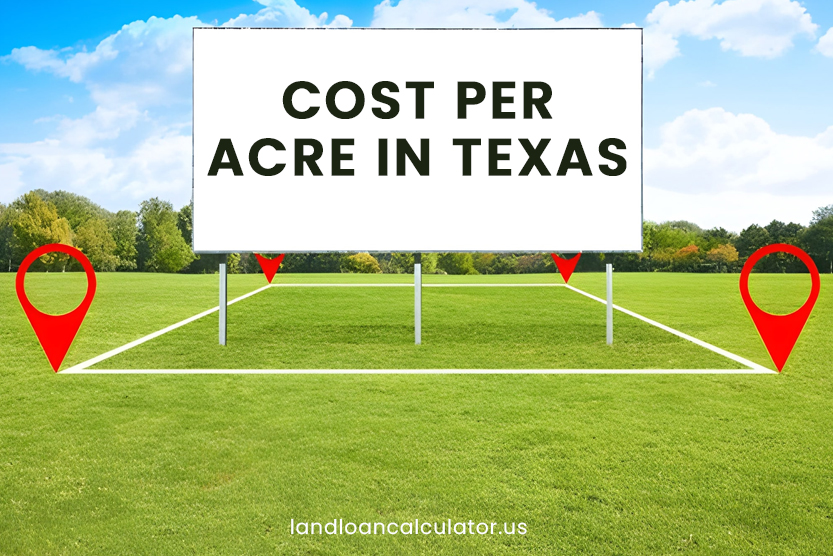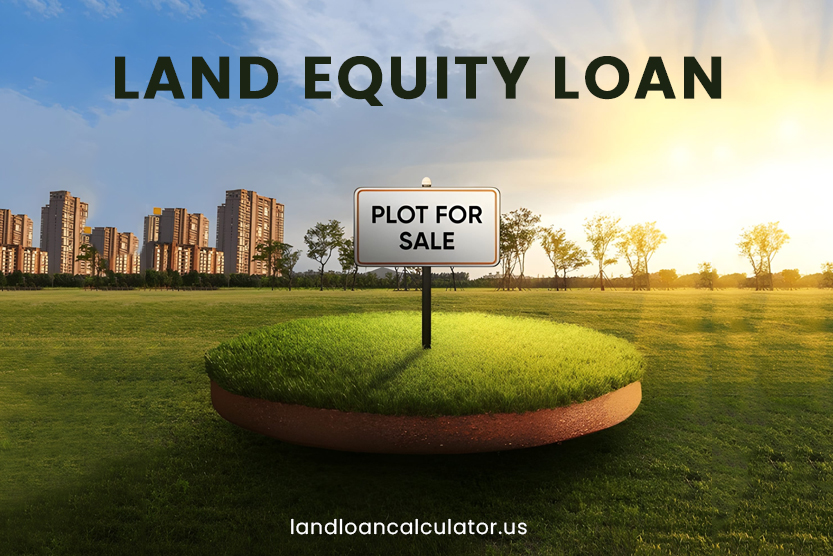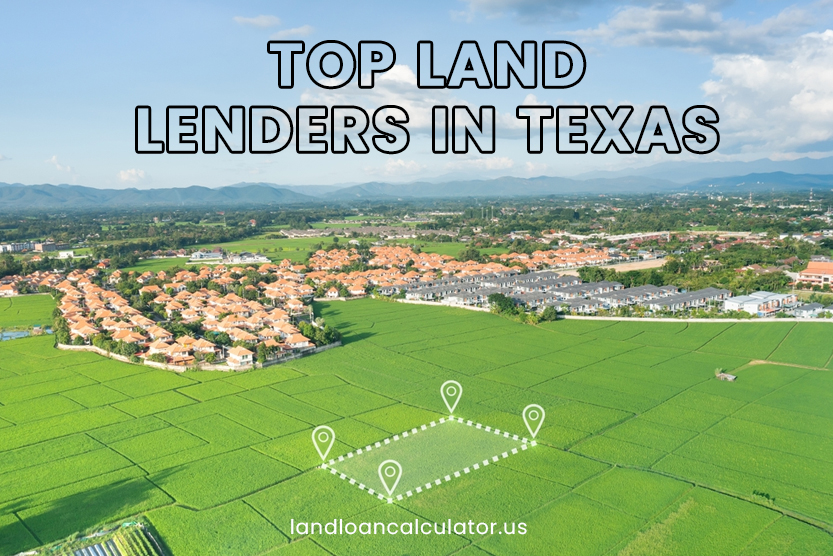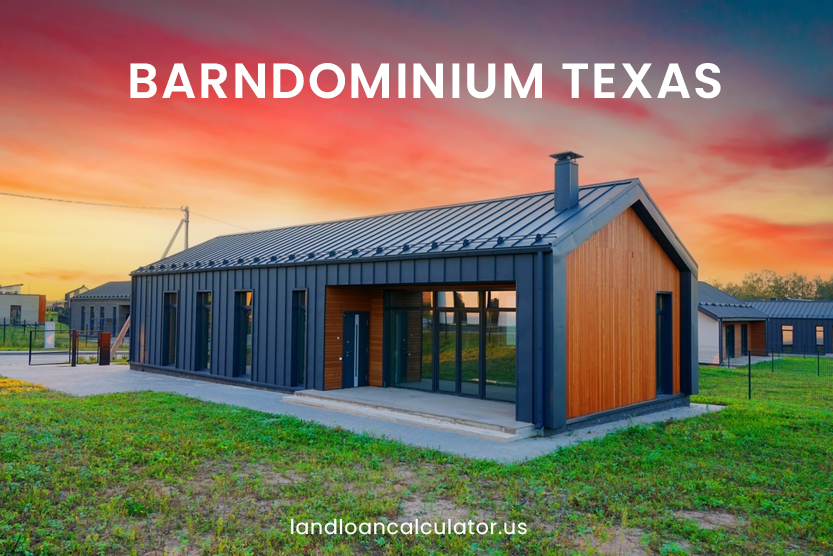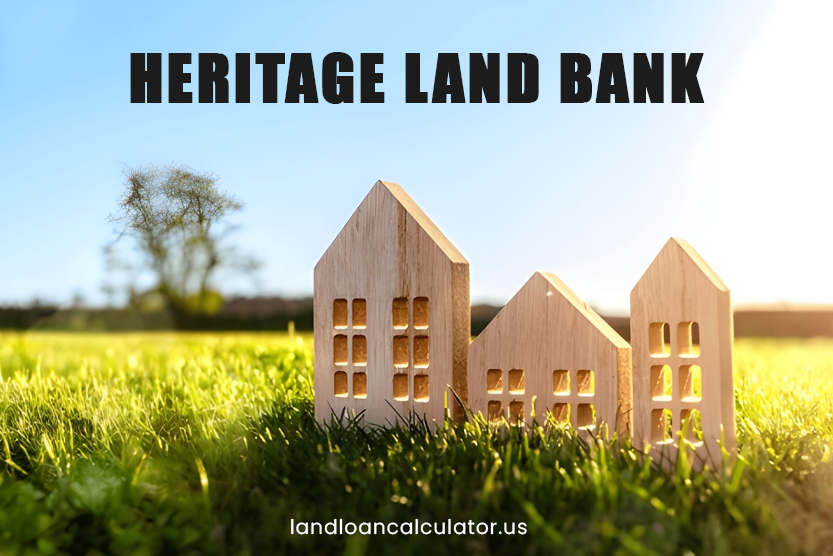Heritage Land Bank is a trusted financial institution that specializes in helping individuals, families, and agribusiness owners finance farms, ranches, country homes, and agricultural ventures across rural America. Whether you’re buying a small country retreat, expanding your cattle operation, or purchasing modern equipment for your farm, Heritage Land Bank provides flexible loan options designed for rural life. With deep roots in the agricultural community, this institution stands out for its commitment to helping people achieve their land and country homeownership goals through personalized lending solutions.
What Is Heritage Land Bank?
Heritage Land Bank is a member of the nationwide Farm Credit System, a cooperative network created to serve the credit needs of rural communities and agricultural producers. The bank operates with a strong mission: to provide reliable and affordable financing options to farmers, ranchers, agribusinesses, and rural property buyers. Unlike traditional commercial banks, Heritage Land Bank is a member-owned cooperative, meaning profits are returned to customers through patronage dividends rather than going to corporate shareholders.
This cooperative model allows Heritage Land Bank to focus entirely on the success of its borrowers and communities, not on maximizing profit margins. Its services include loans for farms and ranches, agribusiness operations, country homes, recreational properties, and farm equipment. By understanding the unique challenges and cycles of rural economies, the bank ensures that its financial products truly meet the needs of rural borrowers.
The Mission and Vision of Heritage Land Bank
At its core, Heritage Land Bank is driven by a simple yet powerful vision — to be the most trusted financial partner for anyone looking to build, buy, or expand their agricultural or rural property. Its mission revolves around empowering rural communities by providing the financial tools needed for growth, sustainability, and generational success.
The bank believes that land is more than just property — it’s heritage, livelihood, and future security. That’s why Heritage Land Bank combines traditional values with modern financial solutions, ensuring that rural life continues to thrive in today’s rapidly changing economy. Its guiding principles include integrity, partnership, and stewardship — values that have made it a cornerstone for agricultural lending in the regions it serves.
Why Choose Heritage Land Bank?
There are many financial institutions offering loans, but Heritage Land Bank stands apart because it specializes exclusively in rural and agricultural financing. This specialization gives it an unmatched understanding of the land market, agricultural economics, and the challenges of running a farm or rural business.
Here’s why borrowers continue to choose Heritage Land Bank:
-
Tailored Loan Programs: Every loan is customized based on the borrower’s unique needs — whether for a first-time land purchase, farm expansion, or equipment upgrade.
-
Local Expertise: The loan officers and appraisers at Heritage Land Bank live and work in the same communities they serve, ensuring local insight and realistic financial assessments.
-
Flexible Terms: Borrowers benefit from flexible repayment options that align with agricultural income cycles.
-
Competitive Rates: As a cooperative lender, the bank offers some of the most competitive interest rates in the market.
-
Patronage Dividends: Profits are shared back with borrowers, effectively lowering their cost of borrowing.
-
Long-Term Partnerships: The bank aims to support customers for life, offering financial advice and follow-up even after a loan is approved.
This personalized, relationship-based approach has earned Heritage Land Bank a strong reputation as a reliable partner for anyone seeking to invest in rural America.
Loan Options Offered by Heritage Land Bank
1. Farm and Ranch Loans
Owning a farm or ranch is a lifelong dream for many. Heritage Land Bank helps turn that dream into reality by offering financing options that cover everything from purchasing land to developing infrastructure. These loans can be used for:
-
Buying existing agricultural properties
-
Expanding acreage or improving land quality
-
Building barns, irrigation systems, and fences
-
Livestock and crop financing
The bank’s agricultural experts understand the seasonal nature of farming and design loan schedules accordingly. With a focus on long-term sustainability, Heritage Land Bank ensures that borrowers can grow their operations without facing unnecessary financial strain.
2. Agribusiness Loans
For those running or starting agricultural enterprises, Heritage Land Bank provides business loans designed to help agribusinesses scale and innovate. From local dairies and grain storage facilities to supply companies and food processors, the bank offers funding solutions that support every stage of business growth.
Agribusiness loans from Heritage Land Bank typically cover:
-
Facility construction or expansion
-
Equipment purchases and upgrades
-
Working capital needs
-
Land acquisition for production sites
By understanding the unique business cycles and market pressures of the agricultural industry, Heritage Land Bank structures financial solutions that promote steady and sustainable business growth.
3. Country Home Loans
If your dream is to live in the peace and beauty of the countryside, Heritage Land Bank can make it happen. Its country home loan program allows individuals and families to purchase or build homes in rural areas, even on large acreage properties that many conventional lenders might avoid.
These loans are ideal for:
-
Building a custom home in the country
-
Buying existing homes with acreage
-
Remodeling rural homes
-
Financing secondary or vacation properties
Unlike standard mortgages, Heritage Land Bank’s country home loans consider the value of both the house and the land, providing a more comprehensive financing solution for rural living.
4. Recreational Land Loans
For those seeking land for hunting, fishing, or simply enjoying nature, Heritage Land Bank offers recreational property loans. Whether it’s a small getaway tract or a large ranch used for outdoor recreation, these loans allow people to own and enjoy their own piece of the countryside.
Borrowers can use recreational loans for:
By helping individuals reconnect with nature and preserve open spaces, Heritage Land Bank supports both lifestyle and environmental goals.
5. Equipment Loans
Modern agriculture depends on efficient, high-quality equipment. To help farmers stay competitive, Heritage Land Bank offers financing for tractors, combines, irrigation systems, and other essential farm tools. Instead of tying up working capital, borrowers can spread out payments over time while continuing to operate efficiently.
Typical equipment loans include:
-
New or used machinery purchases
-
Equipment upgrades or replacements
-
Custom payment plans based on seasonal income
This practical lending approach helps farmers stay productive and profitable, even during challenging seasons.
Understanding the Cooperative Advantage
One of the most defining characteristics of Heritage Land Bank is that it operates as a cooperative lender. This means that every borrower is also a part-owner. When the bank performs well financially, those profits don’t go to outside shareholders — they go back to the members in the form of patronage dividends.
This structure ensures transparency, fairness, and shared success. Borrowers have a voice in how the institution is managed, creating a true partnership between lender and community. In many years, these patronage payments significantly reduce the effective cost of borrowing, making Heritage Land Bank loans even more attractive compared to traditional banks.
Who Can Apply for a Heritage Land Bank Loan?
Heritage Land Bank serves a diverse group of borrowers — from first-time land buyers to multi-generational farmers. You don’t have to be a full-time agricultural producer to qualify. Whether you’re looking for a rural home, a place to hunt, or land to start a business, Heritage Land Bank has programs for individuals, families, and commercial operations alike.
The basic eligibility requirements generally include:
-
A clear plan or purpose for the property or business
-
Financial stability and repayment capability
-
A rural or agricultural property within the bank’s lending region
Because each loan is tailored, the approval process focuses on understanding your goals and creating a solution that works for you.
The Heritage Land Bank Experience: How the Process Works
Applying for a loan with Heritage Land Bank is designed to be straightforward and stress-free. The process typically includes the following steps:
-
Initial Consultation: Borrowers meet with a loan officer to discuss their goals, property, and financial needs.
-
Application Submission: Applicants provide financial statements, property information, and other required documents.
-
Property Appraisal and Review: The bank assesses the land or asset’s value and suitability for financing.
-
Loan Structuring: A custom loan package is created with terms, rates, and repayment schedules suited to the borrower’s circumstances.
-
Approval and Funding: Once approved, funds are disbursed promptly, allowing borrowers to move forward with their plans.
Throughout the process, borrowers receive guidance from experienced lenders who understand the nuances of agricultural and rural finance.
Community Commitment and Local Impact
Beyond lending, Heritage Land Bank plays an active role in supporting the rural communities it serves. Through sponsorships, scholarships, and agricultural education initiatives, the bank invests in the next generation of farmers and rural leaders. Its employees often participate in local fairs, FFA programs, and nonprofit efforts that strengthen community ties.
This commitment to community development aligns with the bank’s cooperative roots — supporting not just individual borrowers, but the overall vitality of rural America.
A Rich History Rooted in Rural America
The story of Heritage Land Bank is deeply intertwined with the development of American agriculture and the evolution of rural lending. Founded as part of the Farm Credit System, the bank traces its heritage back over a century — to the early 1900s, when farmers struggled to find fair and reliable sources of credit.
Before the establishment of the Farm Credit System, most farmers faced extremely high interest rates from private lenders and had few long-term financing options. Recognizing the need to support agricultural stability, Congress created a network of cooperative banks specifically for rural America. Heritage Land Bank emerged as one of these trusted cooperatives, carrying forward the mission of providing dependable, affordable credit to farmers and landowners.
Over the decades, the bank has weathered economic shifts, technological changes, and evolving agricultural practices. Through it all, Heritage Land Bank has maintained its focus on one guiding principle: helping people build and preserve their connection to the land. Its long-standing reputation reflects generations of trust and community involvement — something that few modern financial institutions can match.
The Philosophy Behind Heritage Land Bank
At its heart, Heritage Land Bank believes that land ownership is about more than just financial investment — it’s about independence, legacy, and stewardship. This philosophy drives the bank’s approach to lending, emphasizing long-term relationships over short-term gains.
Unlike commercial lenders focused purely on profit, Heritage Land Bank views every loan as a partnership. The bank works alongside each borrower to understand their goals, challenges, and vision for the future. This human-centered philosophy has made it a cornerstone of rural lending, where personal integrity and local knowledge matter as much as financial metrics.
Heritage Land Bank also emphasizes education and empowerment. Loan officers often act as advisors, helping borrowers make informed financial decisions and understand the long-term implications of land investment. The goal is not just to issue loans, but to build sustainable futures.
The Role of Heritage Land Bank in Modern Agriculture
Agriculture today looks very different from what it did 50 years ago — and Heritage Land Bank has evolved alongside it. With the rise of smart farming technologies, precision agriculture, and environmentally sustainable practices, modern farmers require both flexibility and innovation from their financial partners.
Heritage Land Bank supports this new generation of agricultural producers by offering:
-
Loans for technology upgrades: including GPS-enabled equipment, drones, and irrigation systems.
-
Sustainability-focused financing: for renewable energy installations like solar panels or efficient irrigation systems.
-
Support for young and beginning farmers: through programs that make land ownership more accessible to those entering agriculture for the first time.
This adaptability ensures that the bank remains relevant in an ever-changing agricultural landscape. By blending its traditional values with forward-thinking financial tools, Heritage Land Bank bridges the gap between heritage and innovation.
Digital Transformation and Online Services
While Heritage Land Bank’s foundation is built on community and personal relationships, it has also embraced digital technology to enhance convenience and accessibility. Modern borrowers expect fast, seamless banking experiences — and the bank has responded with tools that combine efficiency with personal service.
Online Account Management
Borrowers can now manage their loans, make payments, and track statements online through a secure digital platform. This makes it easier to handle finances from anywhere — whether you’re in the office or out in the fields.
Online Loan Applications
Applying for a loan used to require in-person meetings and lengthy paperwork. Now, through the bank’s online portal, borrowers can start the application process digitally. Prequalification tools, document uploads, and status updates simplify the experience without sacrificing the human touch.
Customer Support and Education
Heritage Land Bank maintains an extensive online resource center that provides educational materials, calculators, and guides to help customers make informed decisions. This digital-first approach aligns with the bank’s mission to empower borrowers through knowledge.
By blending tradition with technology, Heritage Land Bank ensures that modern customers enjoy both convenience and personal care — a combination that strengthens loyalty and trust.
Customer Success Stories: Turning Dreams Into Reality
One of the most inspiring aspects of Heritage Land Bank is how its loans have transformed lives across rural communities. Every borrower has a story — and these success stories illustrate the real-world impact of the bank’s mission.
From City Life to Country Living
Take the example of a young couple from Texas who dreamed of escaping city life to raise their family on a small piece of land. Traditional banks were hesitant to lend due to the property’s size and rural location. But Heritage Land Bank saw their vision differently. With flexible terms and personalized support, the couple was able to purchase their dream property, build a home, and start a small hobby farm. Today, their story inspires many others to follow their rural living dreams.
Empowering Generational Farmers
Another borrower, a third-generation rancher, needed to expand his operation to remain competitive. Equipment costs and land prices were rising, and local lenders couldn’t provide the long-term financing required. Heritage Land Bank stepped in with a custom loan package, enabling the rancher to buy additional acreage, upgrade machinery, and improve infrastructure. The result was not just business growth — but the preservation of a family legacy.
Supporting Agribusiness Entrepreneurs
In another case, a group of agribusiness entrepreneurs wanted to launch a grain processing facility in their county to serve local farmers. Heritage Land Bank recognized the potential economic benefit and provided the capital they needed to build the facility. Within two years, the business became a cornerstone of the local economy, creating jobs and expanding opportunities for nearby producers.
These stories underscore how Heritage Land Bank isn’t just a financial institution — it’s a catalyst for progress and prosperity in rural America.
The Heritage Land Bank Advantage: Expertise and Integrity
In the complex world of rural lending, experience matters. Many borrowers turn to Heritage Land Bank because of its deep understanding of land values, soil conditions, agricultural cycles, and rural economies. This expertise allows the bank to make accurate assessments and fair loan decisions that align with real-world farming conditions.
The institution’s loan officers are not just bankers — they’re agricultural specialists. Many of them have personal backgrounds in farming or ranching, giving them a firsthand perspective on what their clients face. This shared experience builds a sense of trust and mutual respect that’s rare in the modern banking world.
Additionally, Heritage Land Bank’s emphasis on integrity and transparency ensures that every borrower knows exactly what to expect. There are no hidden fees, confusing terms, or last-minute surprises. The bank’s goal is to build relationships that last for generations.
Financial Education and Support Programs
Recognizing that successful borrowing goes hand-in-hand with financial literacy, Heritage Land Bank regularly provides educational workshops, webinars, and online resources covering topics like:
-
Farm financial planning
-
Estate and succession management
-
Understanding land appraisals
-
Loan structuring for tax efficiency
By educating its customers, the bank helps them make better long-term financial choices — an approach that promotes stability both for individual borrowers and the wider agricultural community.
Environmental Stewardship and Sustainable Financing
As environmental awareness continues to grow, Heritage Land Bank has taken steps to promote sustainable agricultural practices. Through its financing programs, it encourages borrowers to adopt eco-friendly methods such as soil conservation, water management, and renewable energy systems.
The bank’s philosophy is simple: healthy land equals a healthy future. Supporting sustainability ensures that farms and ranches remain productive for generations while preserving natural resources. This approach aligns with the cooperative’s long-term commitment to stewardship — caring not just for customers, but for the environment itself.
The Role of Heritage Land Bank in the Farm Credit System
To understand the strength of Heritage Land Bank, it helps to look at its parent framework — the Farm Credit System. Established in 1916, this nationwide network of cooperatives provides nearly one-third of all agricultural credit in the United States.
As a member institution, Heritage Land Bank benefits from shared resources, stable funding, and a collective mission to serve rural America. This connection allows the bank to offer competitive rates and maintain financial stability even in fluctuating markets. The system’s cooperative structure ensures that local institutions like Heritage Land Bank remain deeply connected to their communities while enjoying the support of a national framework.
Looking Ahead: The Future of Heritage Land Bank
As rural communities evolve, Heritage Land Bank continues to innovate. The bank’s future priorities include:
-
Expanding digital tools for faster and easier loan management.
-
Supporting younger generations through beginning-farmer programs and mentorship opportunities.
-
Investing in community development, rural infrastructure, and agricultural technology.
-
Promoting diversity and inclusion within rural lending and leadership roles.
Heritage Land Bank envisions a future where every aspiring farmer, rancher, or rural homeowner has access to fair, flexible, and sustainable financing. By combining innovation with its century-old values, the bank is shaping the next chapter of rural prosperity.
Tips for Choosing the Right Rural Loan
If you’re planning to buy land, start an agribusiness, or build a home in the countryside, here are a few key tips inspired by the expertise of Heritage Land Bank:
-
Clarify Your Goals: Know whether your purchase is for investment, recreation, or full-time farming.
-
Understand Property Zoning: Make sure your intended use aligns with local land-use regulations.
-
Prepare a Solid Financial Plan: Having clear income projections and repayment strategies improves your loan application.
-
Work With Specialists: Choose lenders like Heritage Land Bank who understand rural and agricultural financing, not just conventional mortgages.
-
Ask About Patronage Dividends: As a cooperative, Heritage Land Bank often returns profits to members — effectively reducing your loan costs.
Taking these steps will help ensure that your rural financing journey is smooth, transparent, and beneficial in the long run.
Conclusion: Building Rural Futures With Heritage Land Bank
In a world where financial institutions often seem distant and impersonal, Heritage Land Bank stands out as a partner rooted in community, trust, and shared growth. From helping young farmers buy their first piece of land to supporting multi-generational ranches and modern agribusinesses, the bank’s impact stretches far beyond loans and numbers.
Heritage Land Bank represents the best of both worlds — traditional values of honesty and service, and modern innovation through digital banking and sustainable practices. Its century-long commitment to rural America has built not just farms and ranches, but futures, legacies, and livelihoods.
So, whether you’re dreaming of open fields, running a family farm, or building a life surrounded by nature, Heritage Land Bank is there to make it happen — helping people preserve their heritage and build a lasting connection with the land.
Don’t miss out on any news—keep in touch for real-time information, visit: Land Loan Calculator
